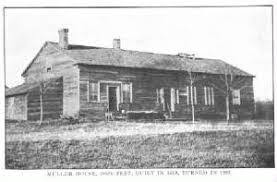This year has been unbelievable here in our area. Winter's on and off which caused a number of building collapses has expanded to the fires that have consumed a number of our locally historic building such as the The Old Union School on Brooklyn Street, the home of John Rockwell on Eaton Road, and the former Cramphin House on Landon Road.
Spring bought us some of the worst flooding in 25 years or more, and now the heat! I have been struggling to Get everything together for my house, the museum, and now our poor unfortunate animals. As usual the cat population has grown because many strays have been dumped by college kids leaving and many are not fixed and are producing many offspring. The food situation including mice, birds and other creatures is down because of the winter, spring flooding, summer heat, and chemicals in the water and so this situation plays on and on until we can gain control of the cat population.
Our website 4CommunityCats.org can give you information on health, cat stories, Vet information, and more so visit it...enjoy the stories that I have written and help our small not for profit group raise some funds to neuter & spay them. Last year with donations and our Cat Gift Shop we raised money for this purpose, but now we have depleted this fund and need to fill this account in. We will be posting a Go Fund Me Page for this purpose. Please share the information.
Until you have picked up a starving to death animal that was somebodies pet "throw away" or an innocent kitten and have it die in your hand, you cannot believe the pain that is felt.
In this heat put out dishes of water, keep your cats or dogs or whatever in a place they are shaded from the heat, feed them if you can, but don't ignore a situation that can be changed and helped for the future! If you get an animal have it neutered or spayed...help your community get control of this heart wrenching situation. Write to our Representatives to ask for local help with funds to neuter or spay. Adopt a pet in trouble...you will be blessed for caring!
You can use https://gofund.me/84bc4e59 or send a check to 4CommunityCats Inc at
c/o M E Messere 5823 Brooklyn Street, Eaton NY 13334
both ways are a 5013C CHARITY DONATION!










